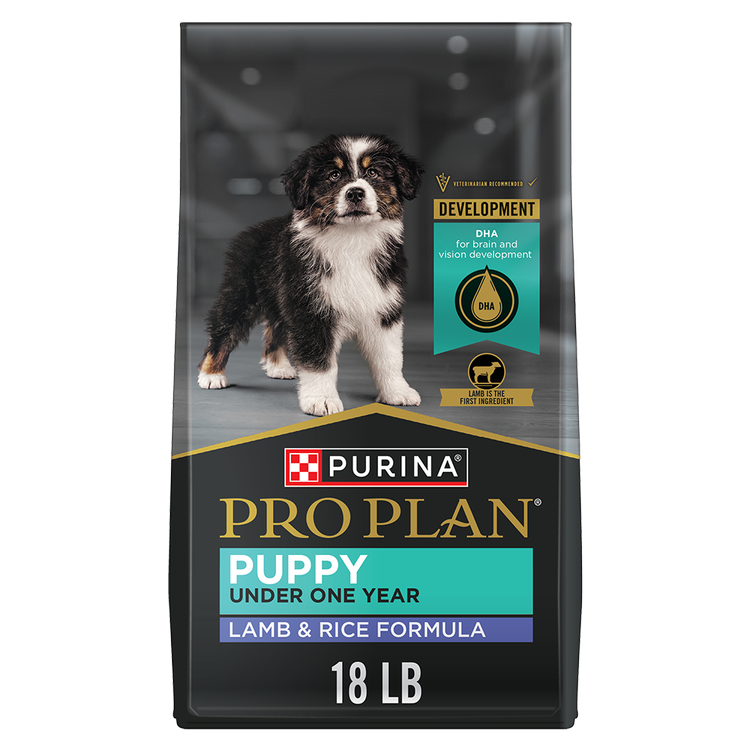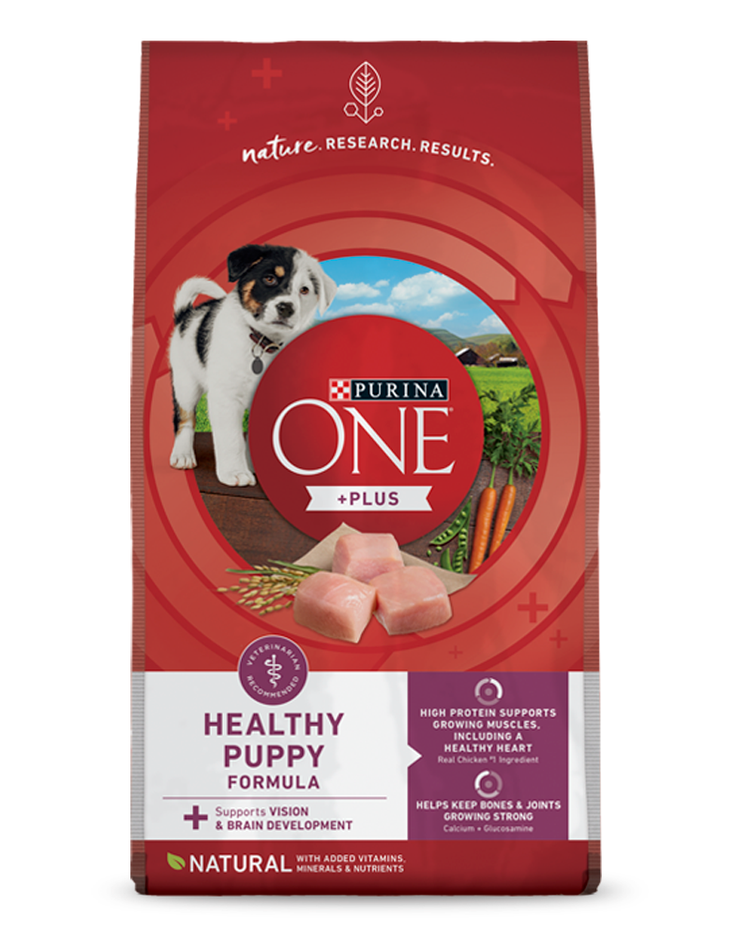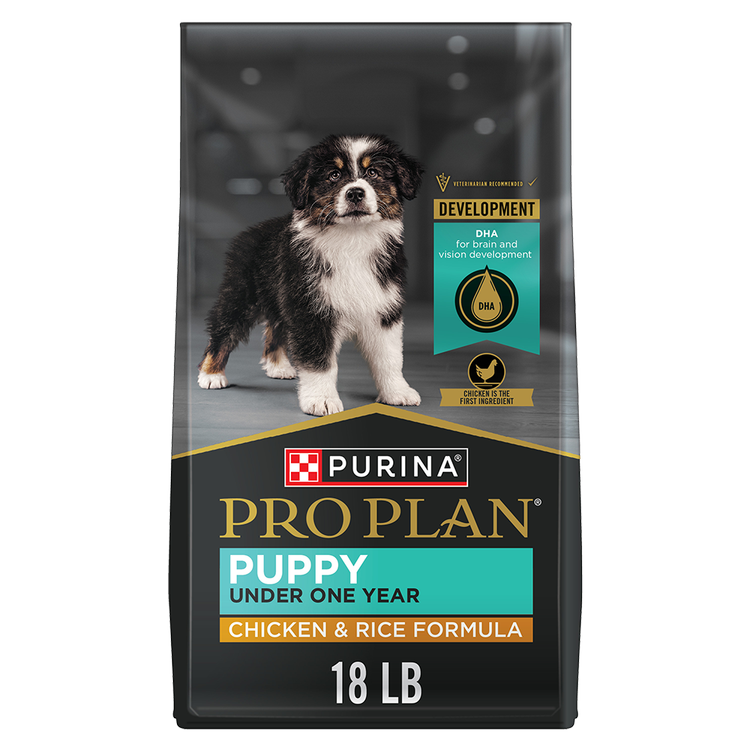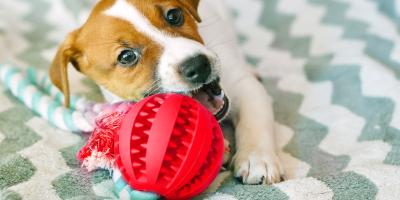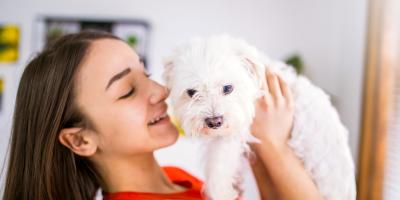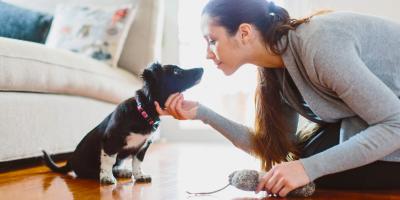Generally, puppies start shedding their coats around four to six months of age.
There is an important caveat, however. If you’re wondering, When do puppies start shedding? because your young canine hasn’t started losing their fur yet, the timeline can vary widely depending on breed.
As your dog becomes an adult, genetics, environment and health play an important role in how often and how much they shed. Fortunately, even heavy shedders’ fur can be managed through regular grooming, a diet of healthy dog food, and other factors.
Read on to learn more about when puppies lose their coat, and how to identify normal shedding versus signs of concern.
Do Puppies Shed?
Yes, puppies shed as part of a natural hair growth cycle. When puppies lose their fur can be similar for a specific breed, but the amount of hair they lose may change for each individual pet.
Shedding is normal for a puppy. It continues into adulthood and lasts throughout their lives.
When Do Puppies Lose Their Puppy Coat?
While puppy shedding begins for many dogs around four to six months of age, this isn’t a hard and fast rule. It may start as early as 12 weeks or as late as their first birthday. Remember, though, this depends largely on breed.
There are also some longhair breeds such as Afghan Hounds and Pomeranians who may not fully shed their puppy coat until 18 and 24 months, respectively.
If you’re wondering, When do puppies shed their puppy coat?, it’s also helpful to know shedding is generally seasonal and linked to light exposure.
Longer periods of daylight in spring can activate the shedding process, which lasts four to six weeks. In fall, canines shed again as daylight grows shorter.
For pets who live indoors, however, the timeline is different. Because they’re always exposed to artificial light, they may shed at any point throughout the year.*
Other interesting facts about shedding, depending on breed:
- Even non-shedding breeds shed a little. These puppies will grow their hair for long periods of time – years even – before they lose their puppy coat.
- Shorthair breeds may not shed much, but again the amount of fur they lose varies from dog to dog.
- Longhair breeds sometimes experience a phase where their coats become patchy or shaggy. This is temporary, lasting a few months as the adult coat grows in.
Why Do Puppies Shed Their Coat?
As puppies get older, their hair starts to grow in cycles. Follicles go through a period of rapid growth, followed by slower growth and then a phase of rest.
Shedding occurs when new, young hair pushes out the old. At this point, the cycle starts again.
What Does a Healthy Puppy Coat Look Like?
If you’re wondering, When do puppies start shedding? because you’re concerned about their skin and coat, there are some general health indicators to watch for.
A dog’s coat should be smooth and shiny, not greasy. Healthy dog skin is typically clear and soft. If you see flakes, bumps or excessive dryness, contact your veterinarian.
How to Manage Puppy Shedding
- Brush your puppy regularly. Even if you don’t groom your dog at home, regular brushing is an easy way to reduce shedding. It’s especially helpful if you have a pet who has long hair or naturally sheds often.
- Use a slicker or pin brush. These get down deep into your puppy’s coat and will help remove a lot of the shedding hair. De-shedding tools are also available.
- Bathing. Regular bathing – every one to three months – may remove dead hair. Ask your veterinarian if a de-shedding shampoo is right for your pet. Not that too much bathing can be bad for their skin and coat health.
- Feed a complete and balanced diet. Healthy dog food can help strengthen hair follicles and reduce instances of breakage.
- Provide enough clean, fresh water. Dehydration can be a factor in hair loss.
Why is My Puppy Shedding So Much?
Dogs who primarily live indoors and double-coated breeds such as Siberian Huskies and Beagles may shed consistently year round.
If you see excess shedding, however, or if shedding is accompanied by any of the following signs, contact your veterinarian:
- Scaly or flaky skin
- Bald patches
- Inflamed/reddened skin
- Excess scratching
These symptoms could be indications of health issues such as fleas, bacterial infections, stress or other conditions.
Puppy Coat vs. Adult Dog Coat
As your canine sheds their puppy coat, you may notice some changes in appearance.
Breeds such as English Setters, Shih Tzus and certain Terriers can undergo changes to coat color and patterns as they become adult dogs.
How much your pet sheds as a puppy may or may not be a sign of how much shedding they do as adults. Some canines lose more fur when they’re younger, others less.
Remember, if you want to know, When do puppies start shedding?, the age can vary based on breed, but generally happens between four and six months of age. Talk to your veterinarian if you have any questions about what to expect, or if you notice excessive hair loss.
Want more puppy health tips? Check out our Pet Expertise page for insight from our experts.
* Eldredge, D. M., Carlson, L. D., Carlson, D. G., & Giffin, J. M. (2007). The Skin and Coat. In Dog Owner's Home Veterinary Handbook (Fourth edition, pp. 102-106). Howell Book House.

Be Rewarded for Your Purina Purchases
Earn and redeem points for Purina products with myPurina app.



